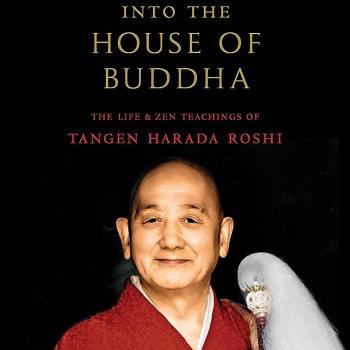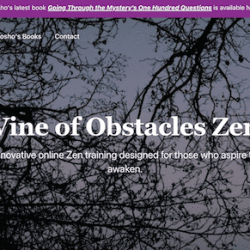Today I’m offering a question for reflection and discussion, so if you’d like to post a comment, go for it.
Here’s the question(s): For practicing and verifying the buddhadharma, what is the role of zazen and daily life? Which is more important? In your practice now, which is stronger – zazen or daily life?
The framing of this issue comes from Lectures on the Ten Oxherding Pictures, by Yamada Mumon, one of the most important Rinzai teachers of the 1900s. It’s a delightful book and I’ll soon be writing more about the Ten Oxen.
In Yamada’s view (quoted more fully below), after becoming Mu in zazen, daily life is more important both because “…kensho achieved while sitting on a zazen cushion is weak” and because it is in daily life where this samadhi is smashed.
Then, Yamada writes, “…our buddha-nature reveals itself clearly in our daily work.”
Simply put, Yamada seems to see daily life as strong and zazen as weak (at least after a certain point in our process).
On the other hand, quite a different view is presented by Soto teacher Shohaku Okumuru in Realizing Genjokoan. “This just sitting in zazen is itself the practice of nirvana.”
This is also quoted more fully below.
Okumura sees daily life as a succession of roles (husband, father, teacher) that are based on I and thou, subject and object. It is in zazen, he says, where we become nothing and are free from our karmic life.
Simply put, zazen is strong and daily life is weak.
Pretty different, eh?
Setting aside Yamada and Okumura, how is it really for you? In your practice now, which is stronger – zazen or daily life?
Here’s the passages cited above:
“When you have been able to achieve the samadhi of Mu in zazen and have got some understanding of Joshu’s Mu, we provisionally call this kensho. But kensho achieved while sitting on a zazen cushion is weak in action. Through contact with the outside world, you must also grasp the life that throbs there. The power that you’ve built up through samadhi in zazen is smashed to pieces by the sounds of the outside world; it is shattered by the sights of the outside world. At that point, suddenly our self-nature externalizes and throbs into life. Is the sound me? Or am I the sound? The sound and I are one; the sound and I go “Gong!” when subject and object are one, there the ox comes trotting along. Buddha-nature is not a precious antique to be wrapped in brocade and packed away in a wooden box. Our buddha-nature reveals itself clearly in our daily work. That is because buddha-nature is act, activity (from Lectures on the Ten Oxherding Pictures, by Yamada Mumon, p. 39).”
“In zazen we are not pulled around by the objects of our thinking or emotions, so we are released from the three poisonous minds that bind us to samsara. This just sitting in zazen is itself the practice of nirvana. I am a Buddhist priest and I am also my wife’s husband and my children’s father…. These roles are like clothing I put on in different situations, and I define who I am according to the role I am doing my best to fulfill at the time. But when I sit facing the wall, I am neither a father nor a Buddhist priest. At that time I am nothing. I am empty. I am just who I am. This is liberation from my karmic life (from Realizing Genjokoan: The Key to Dogen’s Shobogenzo, by Shohaku Okumura, p. 89-90).”












